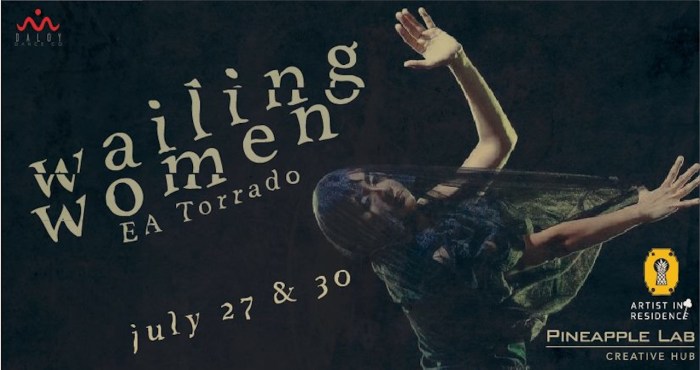The qualification of a wailing woman, an intriguing role steeped in history and cultural significance, takes center stage in this discourse. We embark on a journey to unravel the intricacies of this practice, exploring its emotional and physical demands, social relevance, and contemporary interpretations.
From ancient rituals to modern-day expressions, the wailing woman has left an indelible mark on societies worldwide. Their performances, characterized by poignant cries and expressive body language, evoke a profound connection to shared experiences, cultural beliefs, and the human condition.
Defining the Qualifications of a Wailing Woman: Qualification Of A Wailing Woman

Wailing women have held a significant role in various societies throughout history, performing laments and mourning rituals at funerals and other events. Their qualifications encompass a unique blend of cultural, emotional, and physical attributes.
Historically, wailing women were often chosen from specific social groups or families, with traditions passed down through generations. They possessed exceptional vocal abilities, enabling them to produce piercing cries and elaborate melodies that conveyed grief and sorrow.
Traditional Skills and Attributes
- Exceptional vocal range and control
- Ability to improvise and create original laments
- Strong knowledge of traditional mourning rituals and customs
- Empathy and sensitivity to the emotions of others
- Physical stamina to endure prolonged periods of wailing
Examples of Societies Employing Wailing Women
- Ancient Greece: “Myriologues” or professional mourners
- Medieval Europe: “Keeners” or “Cryers”
- Traditional African societies: “Praise singers” or “Griots”
- Middle Eastern cultures: “Na’ahat” or “Ma’ahiya”
The Emotional and Physical Requirements
The role of a wailing woman demands significant emotional and physical endurance. The ability to convey genuine grief and sorrow requires deep emotional sensitivity and a profound understanding of the human experience of loss.
Physically, wailing involves strenuous vocal techniques that can put a strain on the vocal cords. The use of body language, such as exaggerated gestures and facial expressions, also contributes to the physical demands of the performance.
Emotional Demands
- Empathy and compassion for the bereaved
- Ability to express a wide range of emotions, including grief, anger, and despair
- Emotional resilience to withstand the intensity of mourning rituals
Physical Aspects
- Exceptional vocal range and projection
- Proper breathing techniques for sustained wailing
- Physical stamina to endure prolonged periods of performance
- Effective use of body language to convey emotions
Training and Preparation
Becoming a wailing woman often requires specialized training and preparation. In some cultures, apprenticeships with experienced professionals are common, while in others, the skills are passed down through family lineages.
The Social and Cultural Significance
Wailing women play a crucial role in various societies, reflecting cultural norms, values, and beliefs. Their performances serve as a collective expression of grief and a means of processing the loss.
In some cultures, wailing women are considered guardians of tradition, preserving and transmitting cultural practices related to mourning. Their performances can also influence social behavior, reinforcing norms and expectations around grief and loss.
Role in Different Societies
- In ancient Greece, Myriologues provided a public forum for expressing grief and honoring the dead.
- In traditional African societies, Praise singers use their laments to commemorate the lives of deceased ancestors and leaders.
- In Middle Eastern cultures, Na’ahat perform at funerals and other mourning events, offering solace and support to the bereaved.
Impact on Cultural Practices and Rituals, Qualification of a wailing woman
- Wailing women help shape the collective experience of grief, providing a socially acceptable outlet for expressing emotions.
- Their performances can influence the timing and duration of mourning rituals, as well as the behavior of mourners.
- In some cultures, wailing women are believed to possess spiritual powers, able to communicate with the deceased and facilitate their passage into the afterlife.
Contemporary Interpretations and Adaptations

The role of wailing women has evolved in modern times, influenced by technology and globalization. Contemporary interpretations and adaptations reflect the changing social and cultural landscape.
In some cultures, the tradition of wailing has declined, while in others, it has been reinterpreted to fit modern sensibilities. New forms of expression, such as recorded laments and digital platforms, have emerged.
Influence of Technology
- Recordings of traditional laments allow for wider distribution and preservation.
- Social media platforms provide new avenues for sharing and discussing mourning rituals.
- Virtual reality experiences offer immersive simulations of mourning practices.
Contemporary Artists and Performers
- Artists such as Laurie Anderson and Diamanda Galás have incorporated wailing into their experimental performances.
- Musicians like Björk and PJ Harvey have explored the use of wailing in their songs.
- Performance artists have created installations and interactive experiences that reinterpret the role of wailing women.
User Queries
What are the key emotional demands of being a wailing woman?
Wailing women must possess exceptional emotional resilience and empathy, as they are entrusted with expressing the grief and sorrow of others. They must be able to channel intense emotions while maintaining composure and professionalism.
How has technology influenced the practice of wailing women?
Technology has both preserved and transformed the tradition of wailing women. Recordings and digital platforms have allowed their performances to reach a wider audience, while also enabling contemporary artists to reinterpret the practice in innovative ways.